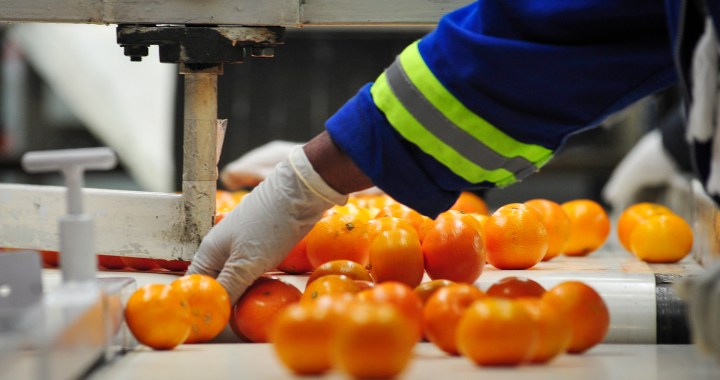TRADE SUCCESS OP-ED
South Africa turns in solid agricultural export performance in third quarter

The agricultural export success resulted from continued collaboration between the industry and Transnet to improve logistics at ports.
South Africa’s agricultural exports amounted to $3.9-billion in the third quarter of this year, up by 4% y/y (according to data from Trade Map). This quarter, the products that dominated the export list were citrus, maize, apples and pears, nuts, wine, soybeans, sugar and fruit juices.
This solid export activity was both a function of improvement in volumes and prices, specifically of fruits. This more than offsets the effects of lower grains and oilseed prices, which have declined notably from their 2022 levels.
Overall, South Africa’s agricultural exports amounted to $10.2-billion in the first nine months of the year, up 1% from the same period in 2022.
This export activity was mainly before intensified challenges at South African ports. Given that the inefficiency challenges at the ports and rail lines are not new, the agricultural export success resulted from continued collaboration between the industry and Transnet to improve the logistics at the ports.
The South African agricultural industry has established forums to continuously engage with Transnet and enhance communication about problems at the ports so that the response could be swift to drive the exports of high-value and perishable products. Still, as evidenced by the worsened logistical efficiency since the start of the fourth quarter of this year, more work and investment are needed to improve the efficiencies.
From a regional perspective, the African continent remained the largest market for South Africa’s agricultural exports, accounting for 32% of the exports in the third quarter of 2023. Asia and the Middle East were the second-largest regions, with a 31% share.
The EU was the third largest region, accounting for 19% of the agricultural exports, with the Americas region at 7%. The UK is also one of the largest single markets for South Africa’s agricultural exports, accounting for 6% of the exports in the third quarter. The remaining 5% was spread to various other world regions.
South Africa’s agricultural imports fell by 7% y/y in the third quarter of this year to $1.8-billion (This is according to data from Trade Map). As with the previous quarters, the products that still dominate the import list are wheat, rice, palm oil, whiskies, sunflower oil and poultry. Wheat and palm oil were the main drivers of the decline in the value of imports.
South Africa’s agricultural imports amounted to $5.3-billion for the first nine months of the year, down by 7% from the same period in 2022.
Positively, South Africa had an agricultural trade surplus of $2.1-billion in the third quarter of 2023, up 15% y/y.
The path ahead and policy considerations
While South Africa’s agricultural exports remain encouraging, we think export earnings will likely soften this year from the 2022 record exports of $12.8-billion. The relatively lower commodity prices and volumes in various products and the intensified logistical constraints in the last quarter of the year may weigh on the export value this year.
Beyond these near-term challenges, South Africa is on an export market expansion mission for the agricultural sector. This means there is a need to work hard to retain the existing markets in the EU, African continent, Asia, Middle East and the Americas.
In an increasingly divided world where geopolitics are fragile, South Africa must walk a careful path so its foreign policy approach does not result in a negative approach to trade or growing protectionism by traditional trading partners. This is critical for South Africa’s agricultural growth, sustainability and job creation.
Notably, South Africa should expand market access to some of the key BRICS+ countries, such as China, India and Saudia Arabia. Other strategic export markets for South Africa’s agricultural sector include South Korea, Japan, Vietnam, Taiwan, Mexico, the Philippines and Bangladesh.
This export market expansion ambition is shared by both the private sector and the South African government. The Department of Trade, Industry and Competition and the Department of Agriculture, Land Reform and Rural Development should lead the way for export expansion in these strategic agricultural markets.
The outcome of the 15th BRICS conference in agriculture also focused on the need to deepen trade within the BRICS+ countries while retaining other markets outside this grouping. This was anchored on the emphasis for BRICS members to lower import tariffs and address SPS (sanitary and phytosanitary) barriers that currently hinder deeper trade within this grouping.
The trade and SPS aspect is vital because the BRICS countries collectively imported about $320-billion of agricultural products from the world market in 2022 (according to data from Trade Map). About 74% of the group’s agricultural imports come from China, 12% from India, 8% from Russia, 4% from Brazil and 3% from South Africa.
The key agricultural products the BRICS grouping imports are soybeans, palm oil, beef, maize, berries, wheat, cotton, poultry, pork, apricots and peaches, sorghum, rice and sugar. These are products that are produced at scale by some BRICS countries. Yet the imports to other BRICS members typically originate from suppliers outside the grouping because of the tariffs and SPS barriers.
Ultimately, while I have reflected on the excellent near-term agricultural trade performance, the focus should remain on market development and maintenance of the existing markets. This is a matter that should also be well appreciated by the political leadership in the foreign policy space within the South African government. DM
Wandile Sihlobo is the chief economist at the Agricultural Business Chamber of SA and author of A Country of Two Agricultures.


















Comments - Please login in order to comment.